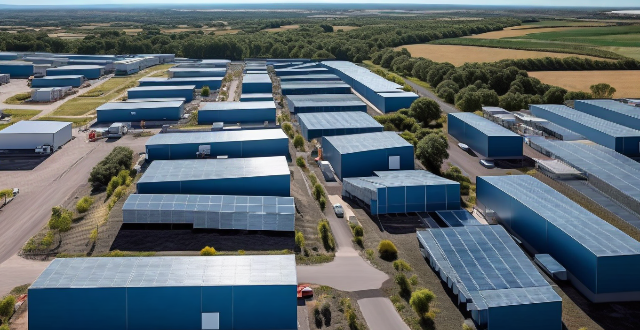Solar energy harnesses the power of the sun to generate electricity or heat. Two major categories are photovoltaic (PV) and solar thermal systems, which differ in their conversion processes, applications, storage capabilities, efficiencies, and costs. PV systems convert sunlight directly into electricity using semiconductor materials like silicon, while solar thermal systems capture the sun's heat to warm a fluid, usually water or air, which then provides heat or generates electricity. PV is mainly used for generating electricity, and solar thermal is used for both heating and electricity generation. Solar thermal systems can more readily incorporate thermal storage solutions, while PV systems typically require battery storage for off-grid applications. The cost and affordability depend on the specific application and location, with PV becoming increasingly competitive in recent years.

Understanding the Difference Between Photovoltaic and Solar Thermal Energy
Solar energy harnesses the power of the sun to generate electricity or heat, but there are different technologies for doing so. Two major categories of solar energy systems are photovoltaic (PV) and solar thermal. Let's dive into the differences between these two approaches:
Photovoltaic Energy
Key Points about Photovoltaic Energy:
- Direct Conversion: Photovoltaic systems convert sunlight directly into electricity using semiconductor materials like silicon.
- No Heat Involved: The process does not involve heating water or other fluids; it solely relies on the photoelectric effect.
- Silicon Cells: PV panels are typically made up of silicon cells that create an electric field when exposed to sunlight.
- Grid Connection: PV systems can be connected to the grid or used off-grid with battery storage.
How Does Photovoltaic Energy Work?
1. Sunlight Absorption: When sunlight hits the solar panel, photons are absorbed by the semiconductor material.
2. Electron Excitation: These photons excite electrons within the semiconductor, causing them to move and creating an electrical current.
3. Current Collection: Metal conductive plates on the solar cells collect this current, which is then sent to an inverter.
4. DC to AC Conversion: The inverter converts the direct current (DC) into alternating current (AC), which is used in homes and businesses.
Solar Thermal Energy
Key Points about Solar Thermal Energy:
- Heat Generation: Solar thermal systems capture the sun's heat to warm a fluid, usually water or air, which then provides heat or generates electricity.
- Two Main Types: There are two primary types of solar thermal systems—solar water heaters and concentrating solar power (CSP) plants.
- Energy Storage: Thermal energy can be stored more easily than electricity, allowing for extended use even after sunset.
- Use Cases: Solar thermal is often used for residential and commercial hot water heating, space heating, and in some cases, for large-scale power generation.
How Does Solar Thermal Energy Work?
1. Thermal Collection: Solar thermal collectors concentrate sunlight to heat a transfer fluid or directly heat water.
2. Fluid Heating: This heated fluid is then circulated to a heat exchanger where it transfers its heat to water.
3. Hot Water Distribution: Hot water is distributed for use in homes, buildings, or industrial processes.
4. Power Generation (CSP): In CSP systems, the heat can also drive a turbine to generate electricity, similar to conventional power plants.
Comparison
Here's a side-by-side comparison of the characteristics and uses of photovoltaic and solar thermal energy:
- Application: PV is mainly used for generating electricity, while solar thermal is used for both heating and electricity generation.
- Conversion Process: PV converts light directly into electricity without an intermediate thermal step, whereas solar thermal relies on the conversion of light into heat first.
- Storage: Solar thermal systems can more readily incorporate thermal storage solutions, while PV systems typically require battery storage for off-grid applications.
- Efficiency: Solar thermal systems can achieve higher temperatures and thus may have higher efficiency in certain applications, especially when combined with storage.
- Cost: The cost and affordability depend on the specific application and location, with PV becoming increasingly competitive in recent years.
In conclusion, while both photovoltaic and solar thermal energy systems rely on the sun as their source, they differ significantly in how they capture and use solar energy. PV systems are great for direct electricity production, while solar thermal systems are versatile in providing both heat and power, often with the added benefit of easier energy storage.